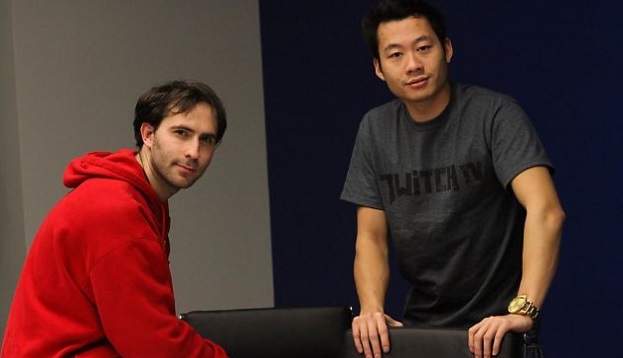“If you’ve never played a videogame before, Twitch is probably not for you,” he said.
Twitch, the video streaming website, allows a fraction of users broadcast or record themselves playing video games with a global audience of millions watching live broadcasts has hit a big landmark recently. The site is a hotspot for gamers and other young people between 15 and 35.
How the company got to this point is an interesting story.
Despite being friends from Seattle prior, co-founders Emett Shear and Justin Kan first began working together as classmates at Yale University in 2005. While there they developed and launched a calendar startup known as Kiko. The startup, which aimed to combine the power of Microsoft Outlook with the modern web sensibilities of Google’s then-new email product Gmail, disappeared in less than a month, struggling to compete with Google’s release of Google Calendar.
Along with Google’s immense amount of clout and resources, the young co-founders realized something else that contributed Kiko’s dwindling – neither of them were heavy calendar users themselves and neither of them had the know-how to find any power users for feedback.
“One of the things I’ve learned the hard way over the years is that you should use your own product,” said Kan, now a full-time partner at Y Combinator.
14 months later Kiko’s scraps were (surprisingly) sold on eBay for $258,000.
“We thought we had hit the lottery,” Kan said, after reportedly expecting no more than $50,000 from the auction. “Maybe startups were not so bad after all.”
This kept the duo going until they came up with an idea that Y Combinator founder Paul Graham was willing to invest $50,000 to make happen: A reality show called Justin.tv, devoted to broadcasting Kan’s life on the Web, 24/7.
In early 2007 the show Justin.tv began broadcasting. The show immediately scored major headlines. Kan even made appearances on NBC’s The Today Show and ABC’s Nightline.
“If we had any success with Justin.tv, it’s because we were our own user,” Kan said. “We knew what was important because it’s stuff we wanted.”
The site opened up to other broadcasters in October 2007. Three years later, Justin.tv had raised $7.2 million in venture capital and was claiming some 31 million unique users per month.
In late 2010 the company tried to expand itself even further by working on two projects known as “skunkworks.” One project would spin off into an Instagram-for-video startup called Socialcam, which sold to Autodesk for $60 million in 2012. The other, a taskforce led by Shear to grow the audience for videogame content on the site, would become a new site called TwitchTV.
“It’s kind of counterintuitive, right ” Shear said. “You want to be as big as possible as a startup, why would you pigeonhole yourself in just one kind of content It took us a long time to realize that was a good idea.”
TwitchTV (now known as Twitch) has undoubtedly outpaced its predecessor, raising $35 million in VC funding over the past three years, and maintaining 45 million unique viewers per month by the end of 2013, up from about 25 million when the year began.
Justin.tv, however, has faded. According to Alexa, Twitch is the 249th most popular website in the world while Justin.tv is number 3,168. In February, Twitch became the name of both sites’ corporate parent.
As for what’s next, Shear said most of the company is heads-down on improving video streaming quality and speed.
Entertainment trade publication Variety has recently reported that YouTube may buy Twitch, the three-year-old video site, for more than $1 billion. Twitch declined comment on those reports for Re/Code.
Source: Re/Code

